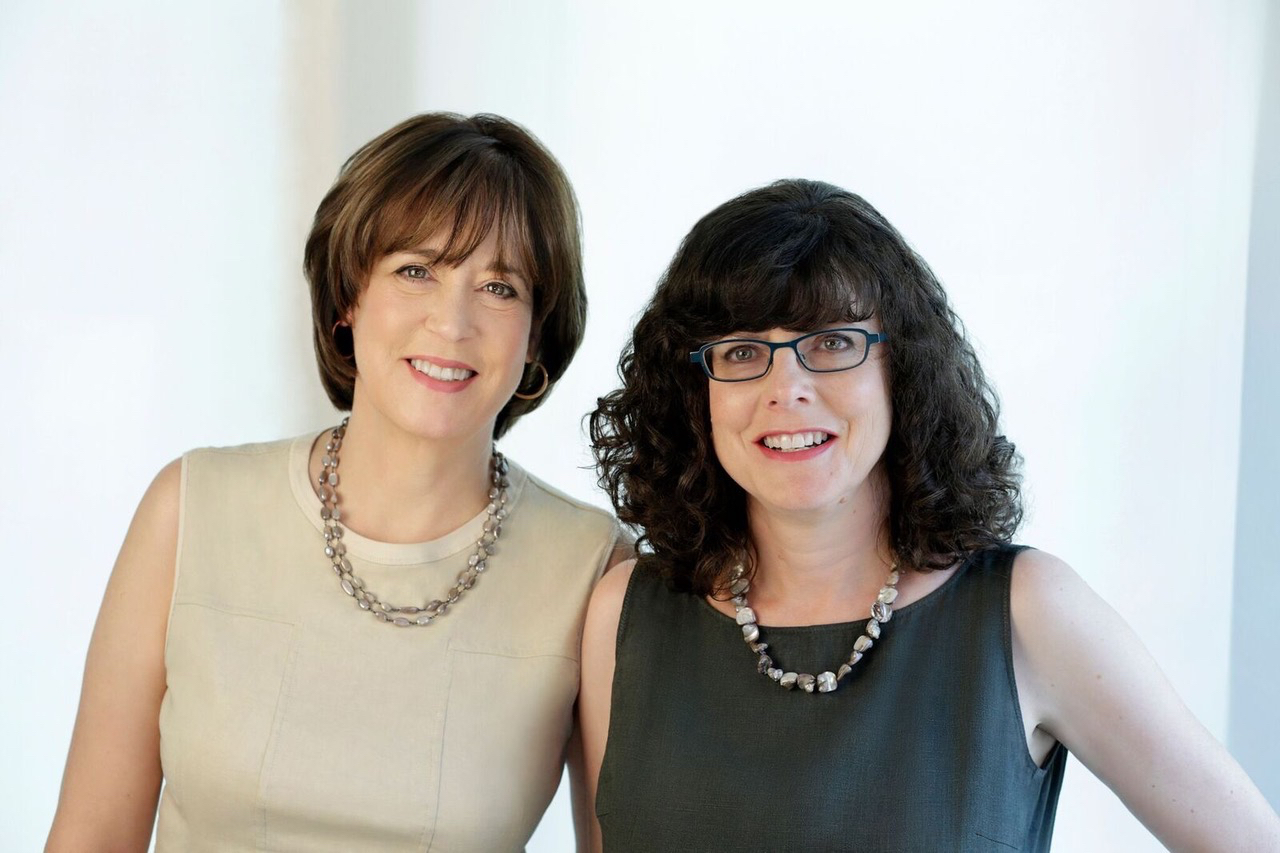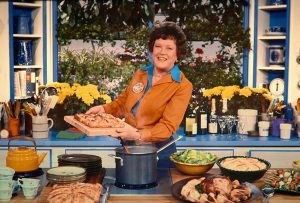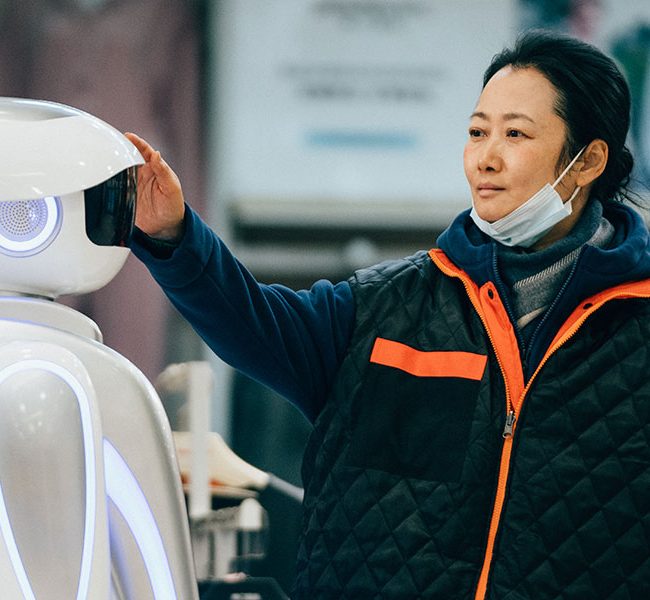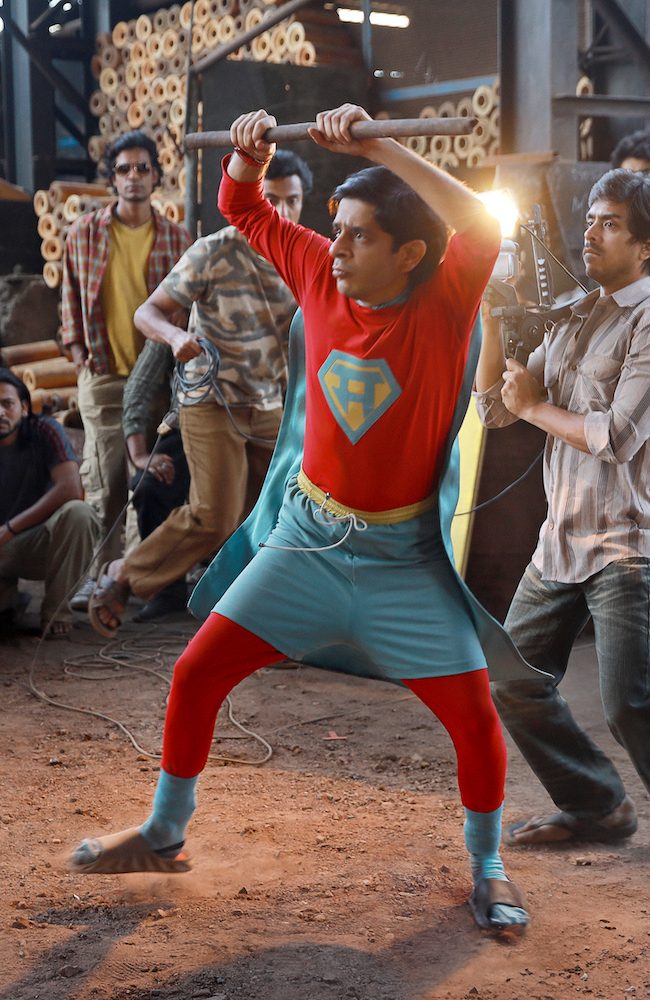A conversation with Julie Cohen & Betsy West (JULIA)

Filmmakers Julie Cohen and Betsy West have now co-directed three documentary features in a row: RBG, My Name Is Pauli Murray and, the most recent, Julia. This last one is a portrait of the late, great Julia Child, who popularized French cuisine in the United States starting in the 1960s. She actually did a little more than that, bringing an appreciation of all kinds of culinary delights to a culture that, when she arrived, saw food primarily through the lens of convenience, rather than taste. She was also a pioneer in the medium of television, and her legacy can be felt to this day in the vast array of cooking shows watched by millions. After the movie’s premiere at Telluride, it next played at Toronto (where I reviewed it), and as part of my festival coverage I had a chance to interview both Julie and Betsy again (as I did for RBG back in 2018). Here is a condensed digest of our conversation, edited for length and clarity.
Hammer to Nail: What is your process, at this point in your collaboration, of selecting subjects? You’ve gone from RBG to Pauli Murray and now Julia Child. I assume that you are working perhaps simultaneously on them, at times, as well. So how did it work, at least for these three?
Betsy West: We actually started to work on Pauli Murray and Julia around the same time, after RBG came out. And with Julia, we really just fell in love with the idea of doing this story, not only because Julia’s such a great character and so much fun to spend time with and has a great love story, but also because Julia had such a profound influence on our world. We just felt like this was a story that really deserved to be told. We wanted to put Julia in the context of the time and to celebrate her and also to celebrate great food.
Julie Cohen: I think the food was really what sold us on this idea, not just Julia’s amazing biography, but just an opportunity to really delve into the world of food, and how Americans’ views and appreciation of food has changed over the decades, especially because of Julia. When we were first considering this, Betsy and I had a great cross-town bus ride where we discussed all of the horrendously bad food that both of our moms made in the era before Julia’s influence had totally taken hold, whether it was, as we talk about in the film, like soup-as-a-sauce or all kinds of vegetables suspended in Jell-O as a mold or spam, or in my house, we actually used to have spaghetti with ketchup on it. The slight twist is that was kind of delicious, but still the point is that it’s not food. Europeans and Asians have understood for many years that food can be something extraordinary to savor, and Americans were just trying to get through dinner as quickly as possible and move on to something else.
BW: In defense of our mothers, I think that a lot of money and effort went into pushing processed food on American housewives. It was frozen food, canned food, convenience food, that a lot of women and men took up.
HtN: You’ve now done three films together as co-directors. How has your process of working together evolved over the last three films?
BW: It’s pretty collaborative. I think it’s evolved in that we have more shortcuts now because we’ve worked together so long that we can anticipate things. We make all the major decisions together. We try to include each other on all emails, anything that’s happening about the film. Then we often divide and conquer the way we’re going to approach the challenge of putting together a 90-minute film. To me, it’s just fantastic to have a collaborator to bounce ideas off of, and to take some of the load and then also to get opinions on how things are working. It’s extremely collaborative. During the pandemic, we were not working together in the same office. And we didn’t see each other in person for months on end. When we finally met up, I realized I felt like I missed Julie even though we see each other every single day on Zoom, constantly.
JC: We have an open Zoom line that we basically leave running and come whenever we need to run something by the other. And we just go over to our screens to reconnect there.
BW: Often, we’ll get off a phone call and we won’t even have to say to each other, “Jump on Zoom.”
JC: We just go.
BW: We’re both there.
HtN: And then how about your process of working with your collaborators? Has that changed at all? I see you’re still working with Claudia Raschke as your cinematographer and Carla Gutierrez as your editor, although I did see that on Pauli Murray you worked with somebody, Cinque Northern, with whom I actually went to film school, as your editor.
JC: Oh, Cinque is great!
BW: Well, we were overlapping, so it wasn’t possible to have the same editor on both projects. But working with Claudia is fantastic. She’s just so good at both doing interviews and doing vérité and it was just very versatile and so fantastic. And of course, Carla, because we had worked together on RBG, total shortcut. We really understand a lot about how we work. We have a whole process, because we do work off of scripts sometimes, and make marks on scripts and then discuss what’s going on and it’s kind of a windmill with the three of us when it’s working well.
HtN: I saw you had a different cinematographer for your Paris scenes. Was that pandemic-related, just because it was easier to have somebody over there?
JC: No, not really. So, our graphics person, both on Julie and on RBG, happens to be a French guy named Kook Ewo. And when we were first talking to him about doing the graphics for Julia and explaining what the story was, I don’t think he was familiar with Julia Child, like a lot of French people, as we point out in the film. And we were actually at a little café and he got very excited and took out his cell phone and googled this really amazing, very bizarre, I would almost say, food cinematography by a friend of his who likes to do really close-in, unusual footage of food. We loved it. And we kind of decided right away that that was going to be one of the looks for our food. Nanda Brédillard is his name.

A still from JULIA
And so the food shooting was actually done both in New York and in Paris. The same recipes were prepared, shot in different ways, and then we edited it together. I think the pear-tart scene is the one where that’s actually the clearest. If you look closely, you can notice you’re seeing the tart being prepared a little bit more realistically. Our food stylist, a woman named Susan Spungen, who’s a great cook and knows how to make amazing food, those are her hands that you’re seeing rolling out the dough and stuff. And then all of a sudden, the pears kind of shift and you’re seeing super close-up and kind of slow and they’re swimming around in the syrup. And then they’re dripping down. And that stuff was done in France. And then Carla very seamlessly cut back and forth between the two. And that, yes, was because of the pandemic.
We had originally planned to bring Nanda right here. They were originally both going to shoot. We were going to do everything in New York and have them shoot it in their own different ways. But because of the pandemic, we actually had to delay the food shooting. And then for the New York shoot, we reconstructed Julia’s kitchen thanks to our amazing producer, Holly Siegel, who did an incredible job making every detail exactly as it was. She sourced an old Garland stove from the 1950s that was in a garage somewhere that she bought that was no longer operational and then hired some guy to rig it all up, to work so that it would actually cook. So that New York stuff was in an actual Julia replica-kitchen and the Paris stuff was shot so close-up that it actually didn’t have any context at all, but then we edited the two together.
BW: For months, our office was just full of copper pots and pans that Holly and her team were ordering on eBay and other places in order to be able to completely match the pattern on the wall of Julia’s kitchen.
HtN: Did you have any difficulty specific to this film in struggling to get either interviews or archival material?
JC: The biggest challenge was that, because Julia has been gone for a while, some of the characters that we would’ve wanted to have in our film are no longer living, Judith Jones, the editor whom we mentioned in the film, who’s the one who really is responsible for Julia’s success in many ways, because she was the one who said, regarding the manuscript of Mastering the Art of French Cooking, “No, this book is amazing and people are going to love it,” when all of the other publishing professionals were like, “I don’t understand, why would American women want something so complicated?” She really got it. Unfortunately, she died, and quite recently, just a few years ago. So that was a sadness, I’d say. We would’ve loved to interview her, but we were very pleased and honored to have some really amazing people from the food world, both Julia’s friends and broader-context characters whom we were able to interview.
BW: People wanted to talk about Julia; she’s a beloved person in the food world and we really didn’t have too much trouble finding people so long as they were still around to talk. Moving to a virtual-editing situation posed some challenges. Finishing the editing, while we were all masked up for the last bit of shooting the food and also couple of interviews, that was a little challenging, but everybody sort of got around that. And the archival material got slowed down a little bit because a lot of archive libraries shut down during the pandemic. But it was a pretty happy, joyful collaboration. And really a respite from what was going on in the world. You get up in the morning and in my case, always going for a walk with my husband on the sort of deserted streets of New York, and then coming back, going into my little office at home and immersing myself in Julia, it was fantastic for my mental health, I think.
HtN: Do you both have favorite recipes from Julia? And if so, what are they?
JC: Salade Niçoise is not the fanciest Julia dish in the world, but it’s so delicious. Truthfully, watching our food stylist, Susan Spungen, prepare it and watching those shots go in just made me want to eat it. First of all, I actually took a bunch home of what Susan had made and ate it with my husband that night. And then it really has joined in my regular rotation of foods since it’s so easy, but so delicious.
BW: I’m regularly doing Salade Niçoise, which is something we just discovered because it is relatively easy. A lot of Julia’s recipes are pretty complicated and you don’t always have time to do everything. But I think Julia definitely inspired me to just try things out, to be a little bit more adventuresome in what I cook.
HtN: Well, I love to make Salade Niçoise, but I, for one, am tempted, after watching your film, to make my own Bœuf Bourgignon. So, we’ll see. (laughs)
BW: (laughs) It is pretty good. We have done that.
HtN: Well, thank you so much. I loved the film and wish you all the best with it.
JC: Thank you so much!
BW: Thank you!
– Christopher Llewellyn Reed (@ChrisReedFilm)
2021 Toronto international Film Festival; Julie Cohen and Betsy West; Julia film director interview











